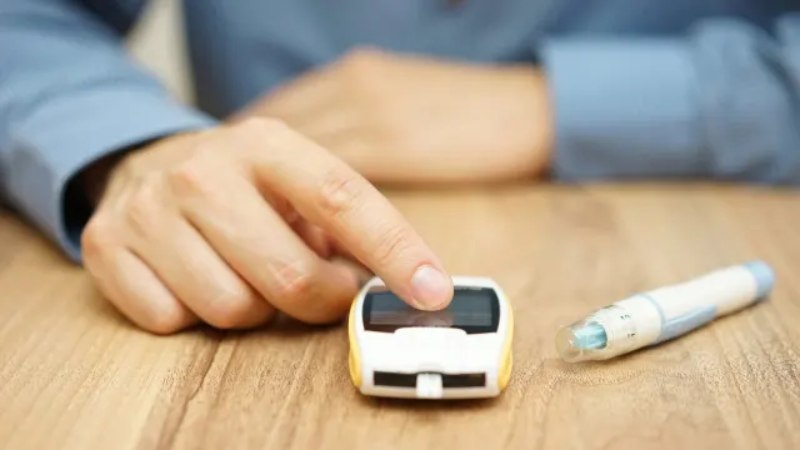Keeping a close eye on blood sugar levels is crucial for anyone managing diabetes. Thankfully, the world of glucose monitoring is constantly evolving, offering exciting new technologies and advancements in 2024. This article delves into the latest trends revolutionizing how we monitor glucose, empowering individuals to take greater control of their diabetes management.
The Rise of Continuous Glucose Monitoring (CGM)
CGM systems have become the cornerstone of modern glucose monitoring. These tiny sensors, inserted under the skin, provide real-time blood sugar data throughout the day and night.
Here’s what’s hot in the CGM world in 2024:
- Improved Sensor Accuracy and Longevity: Manufacturers are constantly refining sensor technology to enhance accuracy and extend wear time. Expect sensors lasting up to two weeks with reliable blood sugar readings.
- Minimally Invasive Insertion Techniques: New applicators are making CGM sensor insertion easier, faster, and less painful, improving user experience.
- Integration with Artificial Intelligence (AI): AI algorithms are being incorporated into CGM systems to analyze data, predict trends, and offer personalized insights for better blood sugar control.
Beyond CGM: Exploring New Technologies
While CGM is a game-changer, other innovative technologies are emerging in 2024:
- Flash Glucose Monitoring (FGM): These minimally invasive sensors provide blood sugar readings with a scan, offering a less frequent snapshot compared to CGM but still valuable for trend analysis. Advancements are focusing on faster scan times and improved sensor life.
- Non-invasive Glucose Monitoring: The holy grail of glucose monitoring – research is actively exploring non-invasive methods using sweat, tears, or breath analysis to eliminate the need for finger pricking or sensor insertion. Stay tuned for potential breakthroughs in 2024 and beyond.
- Smart Insulin Pens: These pens connect to smartphones and can record insulin dosages. Some may integrate with CGM data in the future, offering a more comprehensive picture of diabetes management.
The Power of Data and Connectivity
The ability to collect, analyze, and share glucose data is transforming diabetes management:
- Cloud-based Data Storage: Secure cloud platforms allow users to store and access their glucose data anytime, anywhere, facilitating communication with healthcare providers.
- Real-time Data Sharing: CGM systems can share data with smartphones and smartwatches, providing real-time glucose information at a glance. Imagine customizable alerts for high or low blood sugar on your wrist!
- Telehealth Integration: CGM data can be integrated with telehealth platforms, enabling remote consultations with healthcare providers, improving accessibility and convenience.
The Future of Glucose Monitoring: A Glimpse Ahead
As technology continues to advance, here’s what to expect in the future of glucose monitoring:
- Closed-Loop Systems with Advanced AI: Fully automated closed-loop systems will become even more sophisticated. Imagine AI-powered systems not only monitoring glucose but also automatically adjusting insulin delivery based on real-time and predicted blood sugar levels, mimicking the function of a healthy pancreas with incredible precision.
- Personalized Diabetes Management: AI-powered insights will further personalize diabetes management. Imagine receiving customized recommendations on diet, exercise, and medication based on your unique data and lifestyle.
- Proactive Health Management: Glucose monitoring systems may integrate with other health trackers, providing a holistic view of your health and well-being, allowing for proactive interventions to prevent future health complications.
Conclusion
The year 2024 is witnessing exciting advancements in glucose monitoring technology. From more accurate and long-lasting CGM sensors to the exploration of non-invasive methods and the power of AI-driven data analysis, the future of diabetes management is brimming with possibilities. These advancements empower individuals with diabetes to take greater control of their health, live more active lives, and achieve a brighter future.

 Diabetology2 weeks ago
Diabetology2 weeks ago
 Diabetology1 week ago
Diabetology1 week ago
 Diabetology5 days ago
Diabetology5 days ago
 Diabetology6 days ago
Diabetology6 days ago
 Diabetology6 days ago
Diabetology6 days ago
 Diabetology3 days ago
Diabetology3 days ago
 Diabetology3 days ago
Diabetology3 days ago
 Diabetology1 day ago
Diabetology1 day ago












